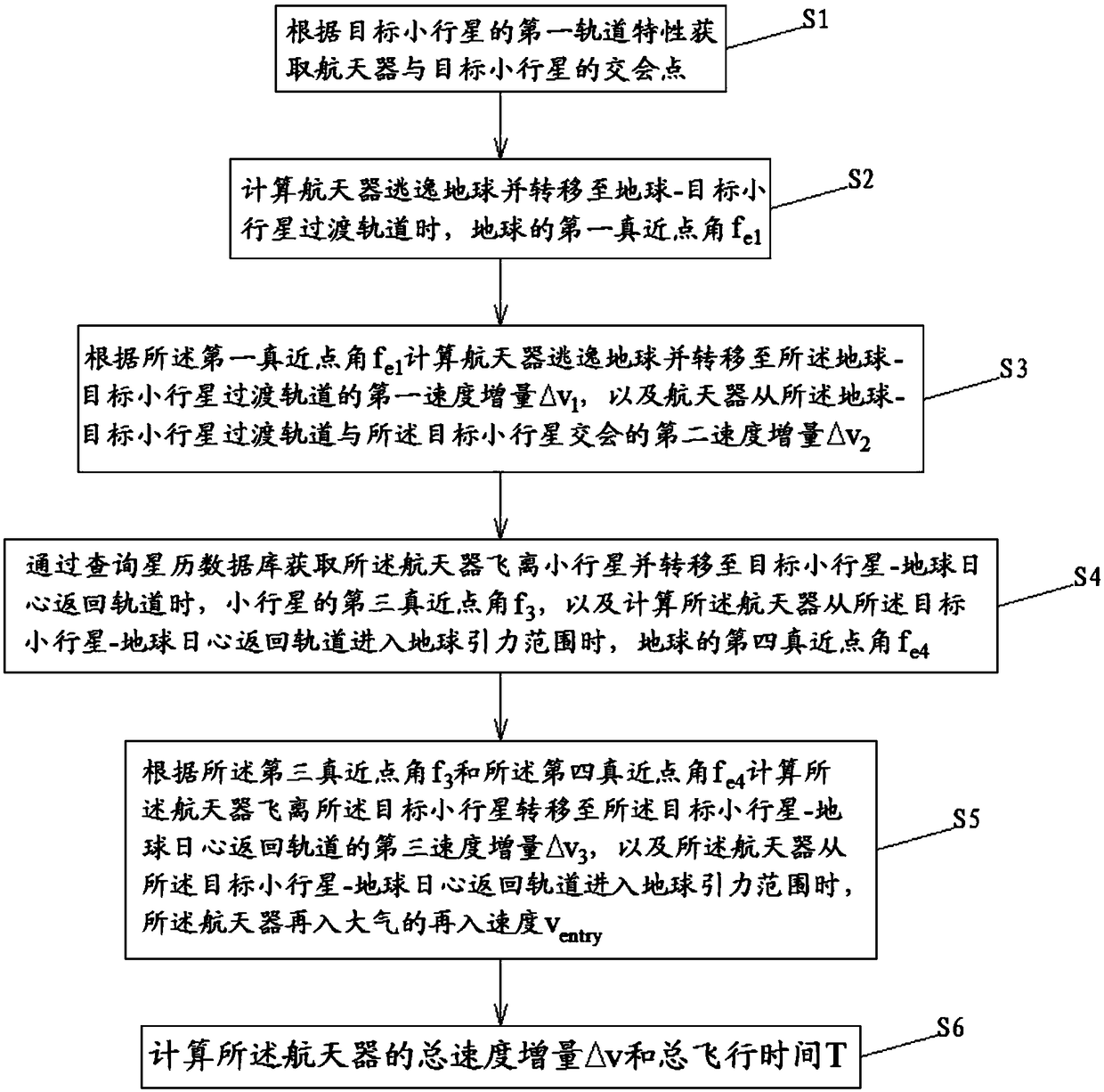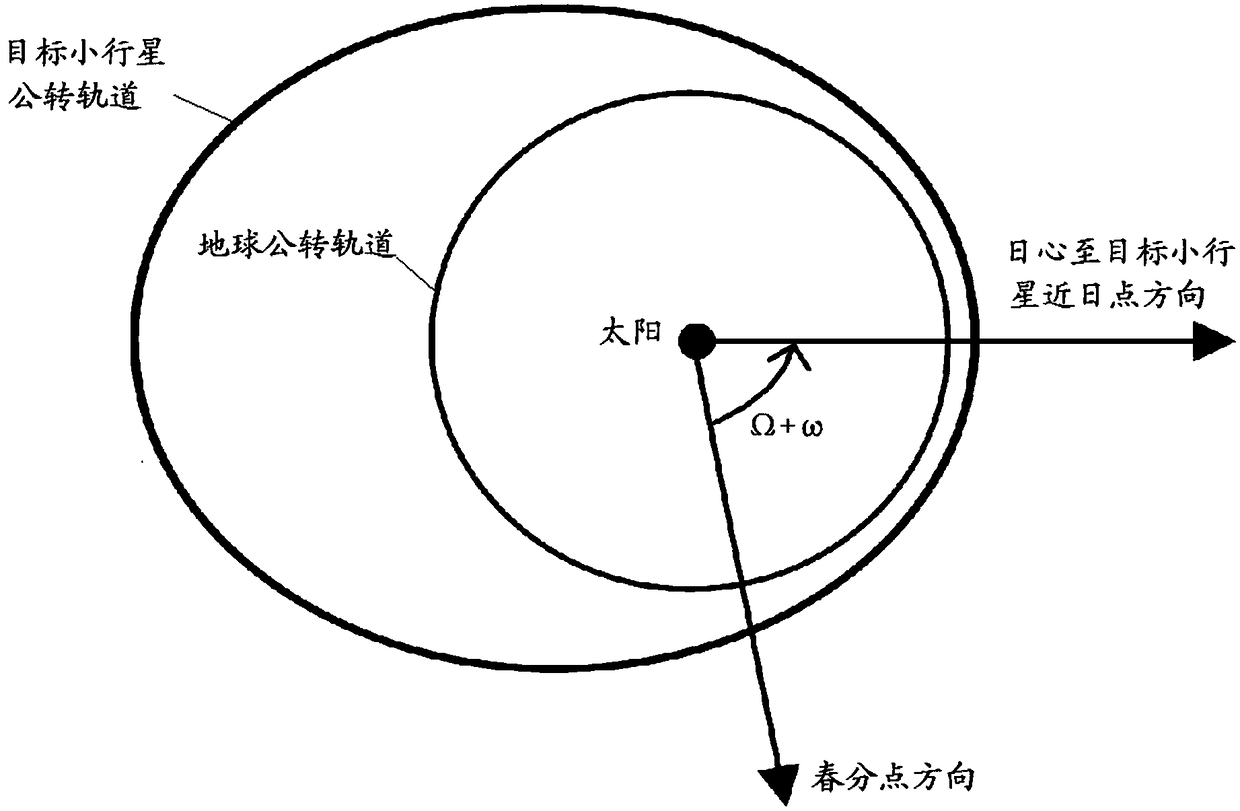Orbit design methods for the detection and return of near-Earth asteroids by manned spacecraft
A manned spacecraft and design method technology, applied in the field of orbit design for manned spacecraft to detect and return near-Earth asteroids
- Summary
- Abstract
- Description
- Claims
- Application Information
AI Technical Summary
Problems solved by technology
Method used
Image
Examples
Embodiment approach
[0067] According to one embodiment of the present invention, step S1 includes:
[0068] S11. According to the ephemeris database, obtain the first orbit characteristic of the target asteroid (i.e. the orbit characteristic of the asteroid), and determine the month and date interval when the spacecraft rendezvous with the target asteroid, wherein the first orbit characteristic includes the orbit characteristic of the asteroid The semi-major axis a of the first orbit, the eccentricity e of the first orbit, the yellow longitude of the ascending node of the first orbit Ω, and the argument of the first periapsis ω. In this embodiment, the appropriate month and date interval when the spacecraft rendezvous with the target asteroid is determined through various parameters in the above-mentioned first orbital characteristics.
[0069] In this embodiment, step S11 includes:
[0070] S111. Calculate the perihelion distance r of the orbit of the target asteroid according to the semi-major...
PUM
 Login to View More
Login to View More Abstract
Description
Claims
Application Information
 Login to View More
Login to View More - R&D
- Intellectual Property
- Life Sciences
- Materials
- Tech Scout
- Unparalleled Data Quality
- Higher Quality Content
- 60% Fewer Hallucinations
Browse by: Latest US Patents, China's latest patents, Technical Efficacy Thesaurus, Application Domain, Technology Topic, Popular Technical Reports.
© 2025 PatSnap. All rights reserved.Legal|Privacy policy|Modern Slavery Act Transparency Statement|Sitemap|About US| Contact US: help@patsnap.com



